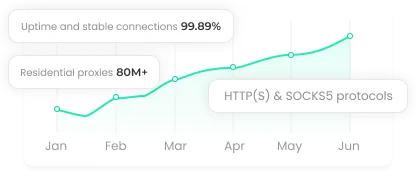The Power of MAP Monitoring for Brand Protection
Retailers slashing prices online. Competitors undercutting you. Gray market sellers creeping in. Your brand can lose control fast. MAP monitoring is the shield that keeps your pricing consistent and your brand strong. MAP monitoring isn’t just tracking numbers—it’s about protecting your brand’s reputation and profitability. It’s the difference between chaos and control in an era where every price change can ripple across the internet in seconds.

Understanding MAP Monitoring
Minimum Advertised Price (MAP) is the lowest price a brand allows its products to be publicly advertised. The goal? Prevent price wars that erode brand value and profit margins.
MAP monitoring is the process of watching advertised prices across all sales channels. This can include online marketplaces, e-commerce sites, paid ads—and even physical print promotions. Using specialized software, APIs, and proxy servers, brands can collect pricing data automatically. When violations appear, preventive actions—from warnings to legal steps—can be taken quickly.
MAP vs. MSRP vs. Actual Selling Price
MAP doesn't restrict actual selling prices. Retailers can still offer in-cart discounts, loyalty benefits, or store-wide promotions. MAP only governs what is publicly advertised.
The Manufacturer's Suggested Retail Price (MSRP), on the other hand, is a benchmark without enforcement. It creates consistency but doesn't carry penalties. In regions like the EU, where MAP enforcement is limited, MSRP recommendations help maintain pricing alignment.
Main Benefits of MAP Monitoring
Protect Brand Equity: Keep advertised prices consistent to maintain a premium image.
Prevent Price Wars: Stop retailers from undercutting each other and damaging profitability.
Ensure Fair Competition: Give authorized retailers a level playing field.
Maintain Profitability: Avoid price erosion, dumping, or other harmful practices.
Detect Unauthorized Sellers: Spot resellers, gray market operators, and even counterfeit activity.
How MAP Monitoring Operates
Collecting Pricing Data
Modern MAP monitoring relies on advanced web scraping. Starting with a product catalog identified by SKUs, bots access retailer websites and extract pricing data. Techniques like proxy servers, CAPTCHA solving, and AI-enhanced parsing ensure accuracy. The data is cleaned, normalized, and compared against MAP thresholds.
Some tools refresh data multiple times per day, providing real-time alerts. Integration options range from simple spreadsheets to full API connections.
Price Monitoring
Online marketplaces—Amazon, Walmart, eBay—are common hotspots for violations. Brand-owned DTC stores and smaller regional retailers often require more manual setup. The goal is to cover all channels where your products are advertised.
Typical Monitoring Systems
Most software platforms, like GrowByData or Prisync, use a central dashboard:
Insert product SKUs or identifiers.
Target major retail channels and optional smaller URLs.
Automatically scrape pricing data.
Normalize and process data for comparison.
Set compliance rules and generate alerts.
Optionally integrate into workflows for enforcement.
Key Features to Look For
Multi-marketplace and international coverage
Real-time alerts for MAP violations
Detailed data collection (prices, seller info, contact details)
Proof collection with timestamps and URLs
Anti-bot measures for uninterrupted data access
Visual dashboards with reporting and export options
Workflow integrations with CRMs or legal enforcement systems
Handling MAP Violations Effectively
Detect: Constantly track products across channels.
Validate: Manually verify to avoid false positives.
Notify: Send formal reminders or notices.
Escalate: Cease and Desist letters, legal action, or platform complaints if necessary.
Automation can handle most of this for large-scale operations, while smaller brands may manage with dedicated staff. Integrations with enforcement workflows make the process faster and more reliable.
Maintaining Reseller Relationships
Monitoring doesn't have to strain partnerships:
Communicate policies early and clearly.
Be transparent and consistent.
Offer support to help retailers comply.
Start enforcement gently—friendly reminders first.
Conclusion
MAP monitoring is vital for brands serious about controlling their pricing, protecting profit, and maintaining a strong market presence. Begin by auditing your current MAP tools, plan automation, and scale up where necessary. A proactive approach ensures your brand isn't just surviving—it's thriving.

















































